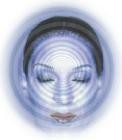The origins of hypnosis

Hypnosis is an altered state of consciousness that has been in use for thousands of years. The ancient Egyptians used altered states of
consciousness in their sleep temples, for healing. Hippocrates, the father of medicine (460 – 377 BC) recognised the power of the subconscious mind. He maintained that our feelings and emotions
arise in the brain, and that the brain controls our body.
Many ancient peoples (American Indian, Africa, India, Asia and the East) have long been able to enter into the subconscious state at will.
Some of the key figures in the more recent history of hypnosis are :
-
Dr. Franz Anton Mesmer (1720-1792) was the first man to systematically use an altered state of consciousness (hypnosis) for curative purposes.
-
Dr. James Braid (1795-1860) was responsible for naming this state "hypnotism" (from Hypnos, the Greek God of sleep). He realised that hypnotism wasn't sleep at all and tried to rename it. However, as his books on the subject had already been published in so many languages, he wasn't successful.
-
Dr. Hyppolyte Bernhiem (1837-1919) - his contribution to hypnosis was in emphasising the role of suggestion.
-
Dr. Emile Couè (1857-1926) - his work lead to the modern understanding of the laws of suggestion. According to Couè, it is not necessarily the suggestion given to the person that produces the results, rather it is how the suggestion is received.
.
In other words, if the client does not accept the hypnotic suggestion nothing happens. The person needs to accept the suggestion as his or her own.
So any suggestion must be appropriate and congruent with what the person desires to change.
In the twentieth century, two figures stand out …
-
Dr Milton Erickson - a doctor who used hypnotherapy with thousands of clients, often with remarkable effects. He used metaphor or stories to deliver suggestion.
-
Dave Elman - trained doctors and dentists in the use of hypnosis and hypnotherapy in the United States. Elman developed and taught fast and easy methods for going into hypnosis.
.
In more recent times, hypnosis has been used by many professionals, namely doctors, dentists, counsellors, midwives, coaches, psychologists, teachers, police, first emergency responders, osteopaths, natural therapists, as well as hypnotherapists and others in assisting their clients.
Ref : The New Zealand Association of Professional Hypnotherapists (Inc)
__________________________________________
Here is a 15 minute video on the History of Hypnosis by courtesy of The American Hypnosis Association (AHA) and the Hypnosis Motivation Institute (HMI) :

Alternatively, you may also view the video at
https://www.youtube.com/watch?v=btTy1iwqoJg&feature=youtu.be
